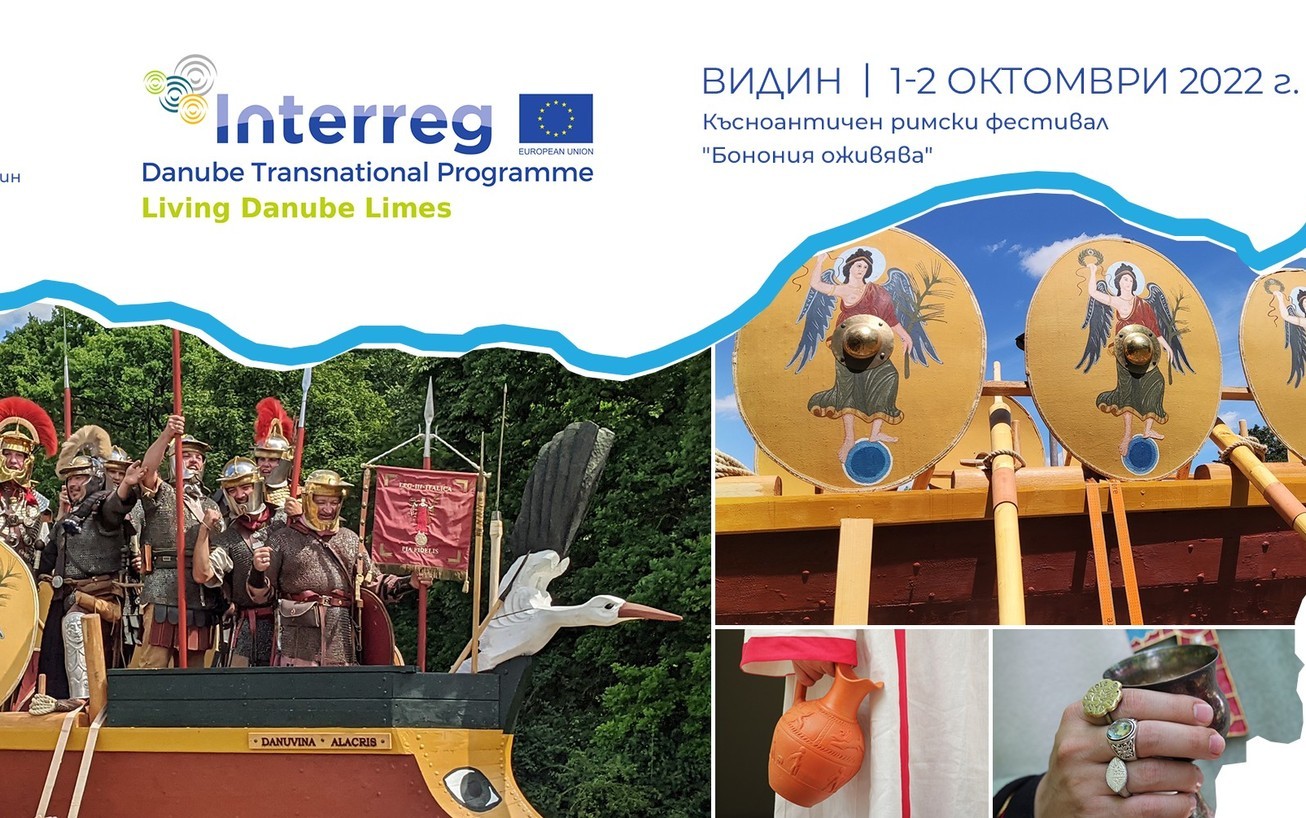
Roman Heritage Comes Alive in Vidin / Bononia
The Roman heritage is part of the history and development of the entire Danube region. Its archaeological and touristic value can serve both as a connecting force between the modern neighboring countries along its river, and to achieve social and economic growth as a tool to reduce the shrinking processes of the settlements. Thanks to the Living Danube Limes project, Bononia was selected as a pilot site for Bulgaria and is included in the Danube Limes network, providing it with additional geophysical surveys and reconstruction with virtual reality (included in a specialized website and mobile application).
The festival aims to present to all participants precisely this significant heritage, immersing them in the Roman way of life, culture, traditions, and crafts. Lovers of spectacular scenes will also be able to enjoy the epic battle between the Roman legions and the Barbarian mercenaries. The historical atmosphere will be professionally recreated by one of the largest and most authentic reenactor groups in Bulgaria, Mos Maiorum Ulpiae Serdicae and DVX Anticae. The entire programme will be available on the event's Facebook page.
The main attraction of the festival will be the mooring of the authentic Roman lusoria, "Danuvina Alacris", on the banks of the Danube. The lusoria is a replica from the 4th century, built over the last 2 years by a team of professionals and volunteers using a method as close as possible to that used by the Romans themselves. The materials used are oak and spruce, the length is approx. 18 m., and its overall decoration is based on discovered artifacts and remains. Symbolically, the ancient Roman goddess of victory Victoria is depicted on her shields.
The Lusoria began its 2,500-kilometer journey along the Danube on July 15, 2022. The consecration and first immersion took place in Ingolstadt, Germany, from where it embarked with its "Roman" oarsmen on its adventure to the Black Sea. Before reaching Bulgaria, the ship crossed numerous stops in Germany, Austria, Slovakia, Hungary, Croatia and Serbia, and international news agencies and dailies such as Reuters and the Guardian have already covered the unique connecting journey along the Danube River.
Besides Vidin, other cities and stops will be part of the the route in Bulgaria:
September 30, 2022 Novo Selo
October 1, 2022, Vidin
October 2, 2022, Village of Archar
October 3, 2022, Lom
October 4, 2022, Kozloduy
October 5, 2022, Oryahovo
October 6, 2022, Baikal
October 7, 2022, Nikopol
October 8, 2022, Svishtov
October 9-10, 2022, Ruse
October 11, 2022, Tutrakan
October 12, 2022, Silistra
You can follow the journey of the lusoria in Bulgaria on the Facebook page of the event: The Roman lusoria "Danuvina Alacris" in Bulgaria.
We are waiting for you in Vidin where you will be welcomed you with a Roman greeting, so save the date in your calendars!
Organizers of the event are National Tourism Cluster "Bulgarian Guide", Association of Danube Municipalities "Danube", Center for Heritage Interpretation, Association for Ancient Reconstructions "Mos Maiorum Ulpiae Serdicae", Regional History Museum of Vidin.
--
© The material is developed by the National Tourism Cluster "Bulgarian Guide" within the framework of the project "Valorising cultural heritage and fostering sustainable tourism by LIVING the common heritage on the Danube Limes as basis for a Cultural Route", with the acronym Living Danube Limes, under the program of transnational cooperation "Danube 2014-2020".
Project co-funded by European Union Funds (ERDF, IPP and ENI).